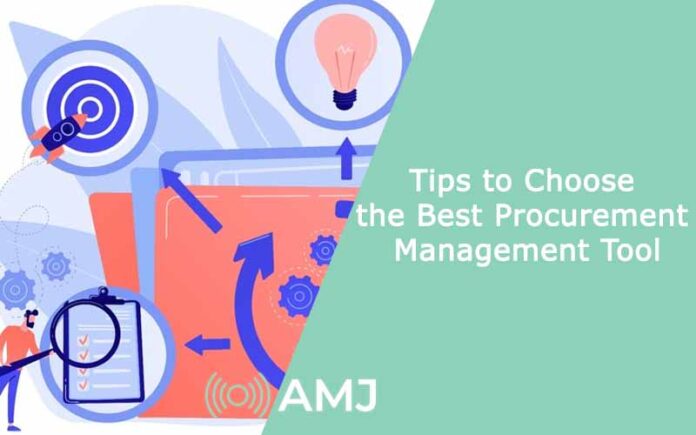Efficient procurement management is essential to succeed in any business today. It helps in making your operations flow more efficiently while cutting down on costs to gain a competitive advantage. It might be quite a task to pick the procurement management tool better suited for you. However, this blog provides useful insights to help you make the right decision. When you make the best-informed choices, you’re also thirty steps ahead of your competition.
Contents
- 1 Assess your organisation’s needs
- 2 Scalability and flexibility
- 3 User-friendly interface
- 4 Robust reporting and analytics
- 5 Integration capabilities
- 6 Supplier management features
- 7 Contract management capabilities
- 8 Security and compliance
- 9 Customer support and training
- 10 Total cost of ownership
- 11 Conclusion
Assess your organisation’s needs
Before going further into the selection process, step back and evaluate what is most needed for the development of your organisation. This includes an understanding of the size of the procurement team, the volume of transactions, the complexity of supply chains, industries, and others. In addition, evaluate where the weaknesses and inefficiencies are in the existing procurement process. With the above comprehensive understanding, it is easy to get a solution that will alleviate the organisation’s challenges and ease their operations. Note that one size does not fit all and, therefore, choose one that will suit a particular organisation.
Scalability and flexibility
Your procurement management tool must also grow with your business. Your transaction volume will increase, as will the number and diversification of your suppliers. Your demands will evolve, necessitating an increase in the complexity of your business processes and systems you must integrate into your procurement management solution. Moreover, your ability to function within the law and the market will be placed under pressure to evolve. A scalable and flexible solution will guarantee that your investment is secured for the future and will maintain its value and usability even as you grow.
User-friendly interface
For you to want to develop the habit of using the tool and improve its interactive efficiency, you need a user-friendly interface. Choosing a solution with a well-thought-out design that is easy to browse through improves the learning curve of your procurement team. This means that an interface that your team can use to perform better increases their satisfaction and reduces associated errors. Otherwise, a clunky and hard-to-navigate system is boring and frustrating to use. Thus, your personnel reject it immediately, and the associated benefits remain far-fetched.
Robust reporting and analytics
Procurement reporting and analytics are critical for data-driven decision-making. Ensure the solution you decide on has a comprehensive reporting platform. Some of the features you may want to pay attention to are the chance to develop tailored reports, watch over KPIs, and analyse spending trends, supplier performance, and cost-saving opportunities. Reporting and analytics will help you derive data-driven conclusions, discover areas of concern in your procurement plan, and quantify your procurement efforts’ effectiveness.
Integration capabilities
The system needs to be integrated into the existing one. This implies that the chosen procurement management tool should be compatible with the enterprise resource planning and financial management tool and other systems in use for increased efficiency. Moreover, the system integration simplifies the process of data sharing by eliminating the need for manual data entry. At the same time, the reduced integration leads to possible inconsistencies and errors in data. Hence it is essential to ensure that your organisation operates on similar or the same data.
Supplier management features
Efficiency in supplier management is another vital aspect to consider when choosing procurement management tools. Some of the key aspects to consider include being able to maintain a single supplier list in a centralised holder, supplier performance evaluation, and excellent cooperation. Moreover, assess tools providing supplier risk inspection services to avoid potential risks and non-compliance. Finally, choose it if you wish to establish long-term collaboration skills, bargain for better prices, and eliminate logistic disasters.
Contract management capabilities
One of the most crucial parts of procurement is contract management, and your selected tool’s offering should include multiple features to cover this area. Admittedly, it is essential to acquire software that allows creating, storing, and tracking contracts. Suppose such applications incorporate the feature to send automatic reminders before the due date or renewal date – even better. On the more advanced end, such as version control or e-signing, also make sense. In any case, contract management will enable you to maintain compliance with the law, prevent costly litigation, and fully exploit various agreements and contracts.
Security and compliance
When choosing a procurement management tool today, security must be high on the list due to privacy and regulatory concerns. Ensure the selected solution adheres to widely recognized common practices such as data encryption, role-based data access, and audit trails. “Choose” the ones that also enable compliance with standards and regulations that apply to the company. Inadequate security and non-compliance significantly elevate the risks your organisation faces, including lawsuits, major losses due to data breaches, fines, and damage to the brand.
Customer support and training
The implementation of a new procurement management tool is a serious endeavour. Make sure you choose a vendor who can offer sufficient support for your case, training resources, and expert guidance throughout the process. A support team consisting of professionals can ensure a seamless implementation experience, and training for your employees and eliminate the possibility of any issues that may arise during the lifespan of the tool. Strong support can assist in expediting the implementation process, ensuring that your team is adequately utilising the tools’ features, and optimising its potential benefits.
Total cost of ownership
Ensure to determine the total cost of ownership. In this context, consider the costs involved that range from maintenance, future upgrades, costs associated with training, and how much you will have to pay for support. However, on the other side, consider the return on investment aspect and how the tool is likely to help you optimise business processes and expenditure hence increasing productivity. Therefore, a proper TCO determination to help you make an independent and competent judgement that will aid in securing support from various stakeholders.
Conclusion
Deciding on the best procurement management tool and sourcing software for your organisation is indeed a mammoth task that could have a significant bottom-line effect on your organisation via better efficiencies, cost savings, and success in general.












![Index of Money Heist [Season 1, 2, 3 & 4 – All Episodes, Cast and Plot] Index of Money Heist](https://www.asiamediajournal.com/wp-content/uploads/2021/05/Index-of-Money-Heist-3-100x70.jpg)